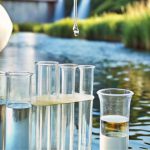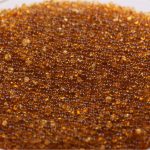In industries where ultra-pure water is essential—such as power generation, pharmaceuticals, semiconductors, and electronics manufacturing—maintaining water quality at the highest level is non-negotiable. One of the most effective technologies used to achieve such purity is the mixed-bed regeneration process. This advanced technique enhances water deionization and ensures consistent performance from ion exchange systems.
In this blog, we’ll explore how the mixed-bed regeneration process works, why it is crucial for ultra-pure water applications, and how it differs from conventional regeneration techniques.
Table of Contents
ToggleWhat is a Mixed Bed Ion Exchange Unit?
A mixed bed unit is a highly efficient deionization system that combines cation and anion exchange resins in a single vessel. These resins are thoroughly mixed to simulate multiple ion exchange stages within one chamber.
- Cation resins remove positively charged ions (such as calcium, magnesium, and sodium).
- Anion resins remove negatively charged ions (such as chloride, sulfate, nitrate).
Together, these resins polish the water to achieve extremely low conductivity—often less than 0.1 µS/cm—making mixed bed units ideal for final purification after primary demineralization.
Understanding the Mixed Bed Regeneration Process
Unlike separate-bed systems (where cation and anion resins are regenerated individually), the mixed-bed regeneration process involves multiple, carefully controlled steps to restore both resins simultaneously.
Step-by-Step Mix Bed Regeneration Process:
- Separation of Resins
- The used resin bed is hydraulically separated by backwashing. Due to density differences, cation resin settles at the bottom while anion resin rises to the top.
- This separation is essential to allow selective regeneration of each resin type.
- The used resin bed is hydraulically separated by backwashing. Due to density differences, cation resin settles at the bottom while anion resin rises to the top.
- Cation Resin Regeneration
- A regenerant solution, usually dilute hydrochloric acid (HCl), is introduced to the cation resin bed.
- This restores the resin’s hydrogen (H⁺) form by displacing the previously exchanged cations (Ca²⁺, Mg²⁺, Na⁺).
- A regenerant solution, usually dilute hydrochloric acid (HCl), is introduced to the cation resin bed.
- Rinse
- After acid regeneration, the cation resin is thoroughly rinsed to remove excess acid and displaced ions.
- After acid regeneration, the cation resin is thoroughly rinsed to remove excess acid and displaced ions.
- Anion Resin Regeneration
- The anion resin is regenerated using a dilute sodium hydroxide (NaOH) solution.
- This converts the resin back to its hydroxide (OH⁻) form by displacing the previously held anions (Cl⁻, SO₄²⁻, NO₃⁻).
- The anion resin is regenerated using a dilute sodium hydroxide (NaOH) solution.
- Final Rinse and Re-Mixing
- After both resins are separately regenerated and rinsed, they are mixed thoroughly to form a homogeneous bed again.
- The unit is now ready for reuse in the water purification process.
- After both resins are separately regenerated and rinsed, they are mixed thoroughly to form a homogeneous bed again.
Applications of Mixed Bed Regeneration Systems
The mixed-bed regeneration process is widely used in industries where water purity is critical:
- Power Plants: For boiler feedwater and condensate polishing to prevent scaling and corrosion.
- Pharmaceuticals: For sterile, pyogen-free water used in drug manufacturing.
- Semiconductor and Electronics: To produce ultrapure water for chip washing and fabrication.
- Laboratories: For analytical processes where trace ions can alter results.
Ion Exchange’s Expertise in Mixed Bed Resin Solutions
As a leader in water treatment technology, Ion Exchange provides high-quality mixed-bed resin solutions tailored to meet the specific needs of various industries. Their expertise in ion exchange systems and innovative resin products enables them to deliver reliable, high-performance water treatment solutions.
Ion Exchange has been a pioneer in ion exchange resin production, holding the distinction of being the first to receive ISO 9001 and 14001 certifications, reflecting its commitment to quality and environmental standards. Additionally, its pharmaceutical-grade resins facility is both USFDA compliant and WHO-GMP certified, ensuring superior reliability for critical applications. The INDION range of ion exchange resins, available in Gaussian and Uniform Particle Size beads, is designed for diverse applications across industries like pharmaceuticals, food and beverage, nuclear, chemicals, bio-diesel, hydrometallurgy, and sugar. With variations in surface area, porosity, and matrix, these resins cater to both water and non-water treatment needs, providing world-class performance for specialized industrial requirements.
Conclusion
The mixed bed regeneration process plays a vital role in achieving and maintaining high-purity water standards. By allowing simultaneous and efficient regeneration of cation and anion resins, it extends the life of resin beds and consistently delivers ultra-pure water.
Whether you’re running a power plant, pharmaceutical lab, or electronics facility, investing in a reliable mix bed regeneration process ensures your water quality meets the highest standards.







